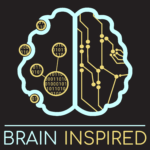
Support the show to get full episodes, full archive, and join the Discord community.

The Transmitter is an online publication that aims to deliver useful information, insights and tools to build bridges across neuroscience and advance research. Visit thetransmitter.org to explore the latest neuroscience news and perspectives, written by journalists and scientists.
Read more about our partnership.
Sign up for the “Brain Inspired” email alerts to be notified every time a new “Brain Inspired” episode is released:
To explore more neuroscience news and perspectives, visit thetransmitter.org.
When you play hide and seek, as you do on a regular basis I’m sure, and you count to ten before shouting, “Ready or not, here I come,” how do you keep track of time? Is it a clock in your brain, as many neuroscientists assume and therefore search for in their research? Or is it something else? Maybe the rhythm of your vocalization as you say, “one-one thousand, two-one thousand”? Even if you’re counting silently, could it be that you’re imagining the movements of speaking aloud and tracking those virtual actions? My guest today, neuroscientist David Robbe, believes we don’t rely on clocks in our brains, or measure time internally, or really that we measure time at all. Rather, our estimation of time emerges through our interactions with the world around us and/or the world within us as we behave.
David is group leader of the Cortical-Basal Ganglia Circuits and Behavior Lab at the Institute of Mediterranean Neurobiology. His perspective on how organisms measure time is the result of his own behavioral experiments with rodents, and by revisiting one of his favorite philosophers, Henri Bergson. So in this episode, we discuss how all of this came about – how neuroscientists have long searched for brain activity that measures or keeps track of time in areas like the basal ganglia, which is the brain region David focuses on, how the rodents he studies behave in surprising ways when he asks them to estimate time intervals, and how Bergson introduce the world to the notion of durée, our lived experience and feeling of time.
- Cortical-Basal Ganglia Circuits and Behavior Lab.
- Twitter: @dav_robbe
- Related papers
0:00 – Intro
3:59 – Why behavior is so important in itself
10:27 – Henri Bergson
21:17 – Bergson’s view of life
26:25 – A task to test how animals time things
34:08 – Back to Bergson and duree
39:44 – Externalizing time
44:11 – Internal representation of time
1:03:38 – Cognition as internal movement
1:09:14 – Free will
1:15:27 – Implications for AI